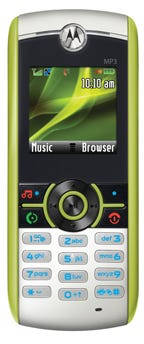Motorola and Sabic make new phones from old bottles
Chicago, IL—At last week’s NPE show, Sabic Innovative Plastics (Pittsfield, MA) showed a variety of larger transportation-related applications, including concept cars, shatterproof transit operator shields, fold-up electric bicycle components, and aircraft interior panels, but one little device creating a lot of interest was an innovative new mobile phone.
June 29, 2009
Chicago, IL—At last week’s NPE show, Sabic Innovative Plastics (Pittsfield, MA) showed a variety of larger transportation-related applications, including concept cars, shatterproof transit operator shields, fold-up electric bicycle components, and aircraft interior panels, but one little device creating a lot of interest was an innovative new mobile phone. Using up to 25% post-consumer recycled (PCR) content from discarded water bottles, Motorola collaborated with Sabic to develop Lexan EXL 8414 polycarbonate for the MOTO W233 Renew mobile phone, which Sabic reports as being the world��’s first certified carbon neutral device.
|
“The MOTO W233 Renew mobile phone is a compelling example of Motorola’s strong and ongoing commitment to sustainability and the environment,” says Bill Olson, director, office of sustainability and stewardship, mobile devices, Motorola. “Working together with Sabic Innovative Plastics, we co-developed Lexan EXL 8414 resin for the phone housing to give today’s increasingly eco-conscious consumers a carbon-neutral, high-performance solution. Renew is a mobile phone designed from the ground up to be an environmentally responsible and very reliable device.”
Said to be the first mobile phone to use PCR, Sabic says producing one million Renew phones from Lexan EXL 8414 would prevent water bottles eight times the height of the Empire State building from entering landfills. The housing is also 100% recyclable and the resin production uses 20% less energy than standard material processes. The PCR content doesn’t lessen the important material characteristics needed in the mobile phone market, with Sabic reporting the resin has excellent impact and temperature resistance and flow properties to allow for thinner wall designs. And compared to alternative PC resins, the Lexan EXL is said to have exceptional release properties, which can allow for shortened cycle times.
Tom Stanley, vice president technology, Sabic Innovative Plastics, says the company’s relationship with Motorola dates back nearly two decades, which has led to this latest co-development milestone. “In this case, Sabic Innovative Plastics leveraged our global technology expertise to meet Motorola’s precise specifications for an eco-progressive solution that offered the same high-performance properties and processing ease of traditional Lexan EXL resin,” Stanley said. —[email protected]
About the Author(s)
You May Also Like



